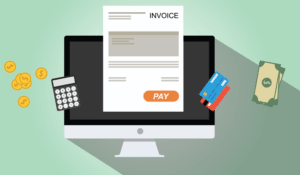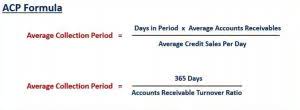What Is a Cash Flow Statement? Essential Insights

You can then use these line items to adjust your financial strategies or business plans accordingly. Many analysts look at free cash flow to determine the true profitability of a business. Free cash flow shows what money the company has left over after paying dividends, buying back stock, or paying off debt. Direct cash flow statements show the actual cash inflows and outflows from each operating, investing, and financing activity.
What Is a Cash Flow Statement? Essential Insights – Business Insider
What Is a Cash Flow Statement? Essential Insights.
Posted: Thu, 11 Apr 2024 07:00:00 GMT [source]
Cash flow vs. profit: Understanding the difference
These investments are a cash outflow, and therefore will have a negative impact when we calculate the net increase in cash from all activities. In contrast, direct cash flow statements leave out the non-cash aspects of your cash flow from operations. These statements don’t start out with the net income—instead, they simply show how much you earn and how much you spend by listing every cash payment and receipt over a given time period. The money your business generates and spends on regular, day-to-day operating activities—such as sales of your products or services and your regular business expenses—is your operating cash flow (OCF).
Cash Flow Statement (CFS) FAQs
- Adjusted EBITDA estimates depend on future levels of revenues and expenses which are not reasonably estimable at this time.
- Greg purchased $5,000 of equipment during this accounting period, so he spent $5,000 of cash on investing activities.
- This is the cash from normal business operations after subtracting any money spent on capital expenditures (CapEx).
- A cash flow statement (CFS) is a financial statement that captures how much cash is generated and utilized by a company or business in a specific time period.
- But as you become more familiar with the language of financial statements it may become easier to make sense of them.
- Cash Flow for Month Ending July 31, 2019 is $500, once we crunch all the numbers.
Cash flows also track outflows and inflows and categorize them by the source or use. EBIT is a financial term meaning earnings before interest and taxes, sometimes referred to as operating income. This is different from operating cash flow (OCF), the cash flow generated from the company’s normal business operations. The main difference is that OCF also accounts for interest and taxes as part of a company’s normal business operations. Using the indirect method, net income is adjusted to a cash basis using changes in non-cash accounts, such as depreciation, accounts receivable (AR), and accounts payable (AP). Because most companies report the net income on an accrual basis, it includes various non-cash items, such as depreciation and amortization.
- A company may have an overall negative cash flow or any one of the sections may have negative cash flow, as the previous example shows in the investing and financing sections.
- You can get a good sense of a company’s liquidity by using the cash flow statement to determine working capital, funds that are used to ensure that a business can operate in the short-term.
- These are generally available on a company’s investor relations website and through the website of the US Securities and Exchange Commission.
- Cash Flow (CF) is the increase or decrease in the amount of money a business, institution, or individual has.
- Ideally, a company’s cash from operating income should routinely exceed its net income, because a positive cash flow speaks to a company’s ability to remain solvent and grow its operations.
- For smaller businesses, positive cash flow can demonstrate business health.
Cash flow statement vs. income statement

We accept payments via credit card, wire transfer, Western Union, and (when available) bank loan. Some candidates may qualify for scholarships or financial aid, which will be credited against the Program Fee once eligibility is determined. For small businesses, Cash Flow from Investing Activities usually won’t make up the majority of cash flow for your company. But it still needs to be reconciled, since it affects your working capital.
Operating cash flow is an important benchmark to determine the financial success of a company’s core business activities as it measures the amount of cash generated by a company’s normal business operations. Operating cash flow indicates whether a company can generate sufficient positive cash flow to maintain and grow its operations, otherwise, it may require external financing for capital expansion. The formula for long-term midstream success is superior scale, strong balance sheets, well-covered distributions and focus on high-quality assets and customers.
- We follow strict ethical journalism practices, which includes presenting unbiased information and citing reliable, attributed resources.
- Calculating cash flow separately from these measures is essential, as the value can be significantly different depending on the business structure.
- All SBA programs and services are extended to the public on a nondiscriminatory basis.
- While both metrics can be used to measure the financial health of a firm, the main difference between operating cash flow and net income is the time gap between sales and actual payments.
As a result, D&A are expenses that allocate the cost of an asset over its useful life. Depreciation involves tangible assets such as buildings, machinery, and equipment, whereas amortization involves intangible assets such as patents, copyrights, goodwill, and software. However, we add this back into the cash flow statement to adjust net income because these are non-cash expenses. Cash flow statements are what is cash flow important, but they’re just one piece in the puzzle of your business’s finances. To get a clear snapshot of how your business is really doing, you should be generating cash flow statements, profit and loss statements, and balance sheets on a regular basis. Cash flow from investing activities means any cash earned or lost on activities like buying or selling an asset—say, a piece of property or equipment.
Differences between the direct and indirect methods
So far, those cuts have been pushed back, initially expected in March and then in June. But since inflation came in hotter than expected for March, whether rates will drop this year is now also in question. So far, the S&P 400, a benchmark for mid-caps, is only up by 4.75% for the year, while the S&P 600 for small caps is down by 1.87%. As you’ll see below, EV sales continue to grow in Mercedes-Benz’s portfolio (although there’s a slight catch). Still, the automaker’s Q report shows a slight revenue drop and an even more significant gap in other notable categories. The expected increase comes amid reports from the International Energy Agency that demand for oil is forecast to grow by about 1.3 million barrels a day this year to a record high.
- Reviewing a company’s cash flow will help an investor obtain a sense of how well-prepared that organization is to cover its financial liabilities.
- The cash flow statement reports the cash generated and spent during a specific period of time (e.g., a month, quarter, or year).
- It produces what is called the net cash flow by breaking down where the changes in the beginning and ending balances came from.
- The result is the business ended the year with a positive cash flow of $3.5 billion, and total cash of $14.26 billion.
- For non-finance professionals, understanding the concepts behind a cash flow statement and other financial documents can be challenging.
- Since CF matters so much, it’s only natural that managers of businesses do everything in their power to increase it.
Investing Cash Flow Common Examples
Usually, money entering the company will be written as a numeral, and money exiting the company will include parentheses around the amount. Cash flow management is more than checking your accounting boxes or creating a cash flow statement—it’s a foundational part of your startup’s growth and survival planning. The first method used to calculate the operation section is called the direct method, which is based on the transactional information that impacted cash during the period. To calculate the operation section using the direct method, take all cash collections from operating activities, and subtract all of the cash disbursements from the operating activities. The cash flow statement aggregates and summarizes all these transactions—helping give investors and other stakeholders a more complete picture of the business’s operations, standing, and trends. Greg purchased $5,000 of equipment during this accounting period, so he spent $5,000 of cash on investing activities.
Do you own a business?

Inflows from investing can include the sale of assets and interest from investments, while outflows can consist of asset purchases and losses from securities. Cash flow from operations can show whether or not a business is financially viable and determine whether outside financing like a loan is needed. Below is Walmart’s (WMT) cash flow statement for the fiscal year ending on Jan. 31, 2024. California is committed to helping students – our future leaders and innovators – pursue their college dreams and reach their full career potential. Financial aid helps hundreds of thousands of students in our state to achieve their higher education goals, and it’s critical that everyone who could benefit has the opportunity to enroll. The first step in accessing financial aid is timely submission of the Free Application for Federal Student Aid (FAFSA), which unlocks federal, state and institutional aid.

